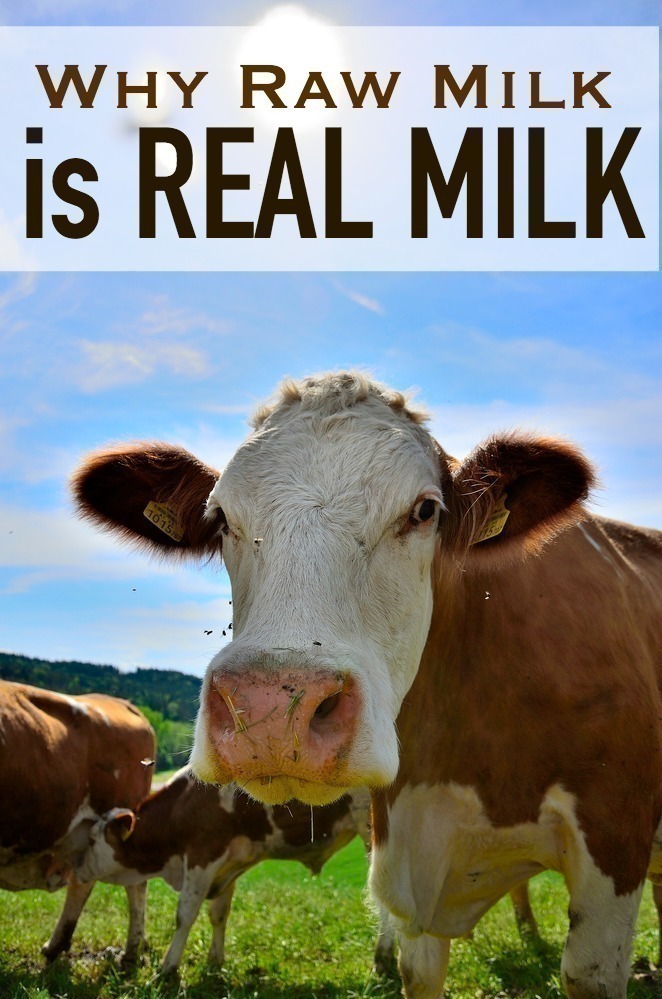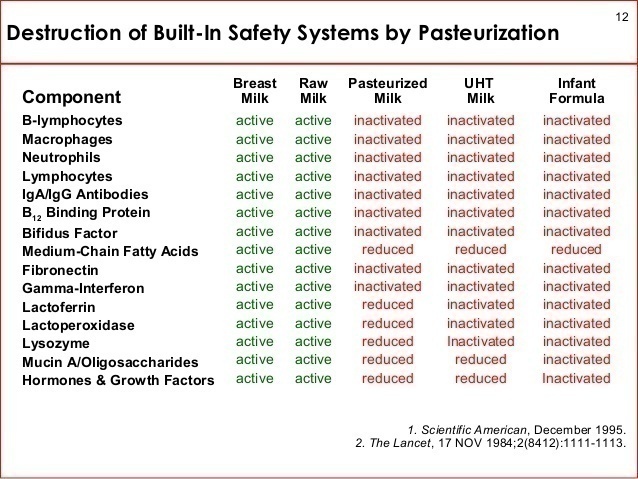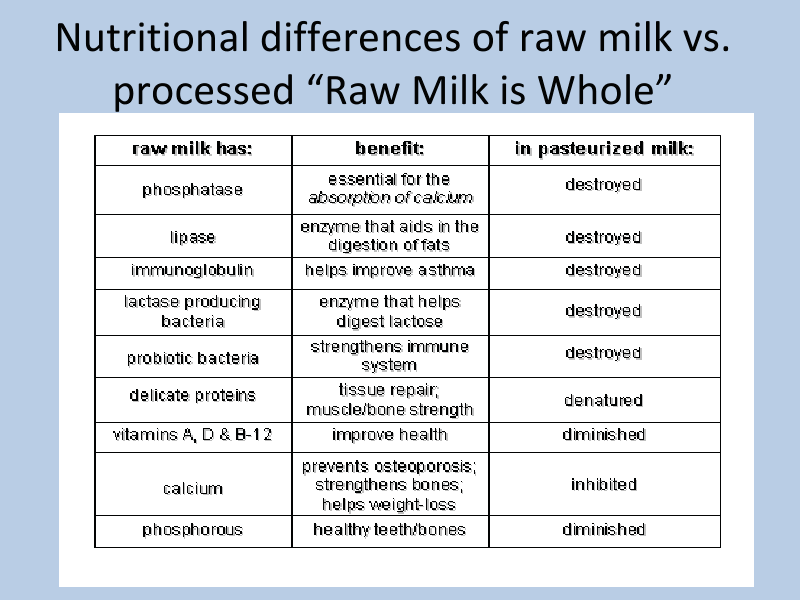
It was just a few months ago that I sat in the office of my OB, listening to the same congratulatory pregnancy speech from the same doctor who had delivered all 4 of my children. In her speech was also the warning of what not to eat, what to eat, and what to avoid – I was to avoid soda, and coffee (which I don’t drink anyways), Sandwich Meat (which I avoid, too), and Raw Milk.
I couldn’t go on – and mentioned “well, I’m not going to stop drinking milk.” – to which she responded “well you are fine as long as you don’t drink Raw Milk. But I do – and that didn’t sit well. Not only was my decision dangerous, but it was irresponsible, and … as she said to me “she was upset but she understood that it was probably just lack of knowledge on my part”.
Wrong – and such a horrible thing to assume of a patient. We have been drinking Raw Milk for a long time, and we won’t ever go back to drinking grocery store processed milk or even Organic for that matter. But then it was just a few days later that a good friend of mine asked me what calcium supplements we were “taking” as a family – that’s two situations in the same week and I really didn’t know how to respond, except say “we don’t take any, we don’t need to.”
Calcium Supplements are something that are popular – you have supplements for kids, then you have items like Caltrate, for adults, that help supplement your deficiency. Right now, it almost seems as if supplements from synthetic vitamins are almost more popular than whole food sources – but that could very well be because so few children out there right now eat whole foods. It’s simply just not convenient.
We don’t take them because my children receive enough calcium in the form of raw milk. I would like to think that our decisions are what help keep them relatively healthy compared to most their age (no asthma, no ear infections – ever!, haven’t been sick this past School Year, and no food allergies, and not one doctor visit — in the last few years). But as some would tell me “that doesn’t mean anything.” And right – it might not… to you. But there is something to be said for that, especially when kids their age are always sick.
Right now, the food & medical industry heavily pushes calcium supplements for both adults and children, as their “calcium builds strong bones and teeth” – so therefore it’s now added to everything – from milk to baby formula, boxed foods (Total Cereal is a great example) and orange juice (with calcium).
In fact, the food industry pushes “calcium fortified food” pretty heavily now – after all, why not just take advantage of what’s in a box? In a carton? After all, we are all busy and who has time to really analyze labels and self research these days?
Not many.
There is NO doubt that Calcium IS important – that we don’t disagree with. But it’s just one of many minerals the body needs to build strong bones. Your body actually needs much more than calcium (vitamin D, vitamin K.. ) for everything to work together … unfortunately right now we live in a time when fast, easy food is something that takes precedence over what is truly better for us.
Milk – the BEST Source or Not?
When you reference calcium, Milk comes up as the BEST suggestion of calcium source. While milk IS a good source of calcium … not “all” milk can & should be upheld as the best option.
97% of the U.S. Population drinks processed, pasteurized milk – which is what you will find on grocery store shelves (Src). Some is regular ($1.89 at our local stores) and some is Organic – no matter the price, it’s ALL pasteurized – which means, it’s heated up to high temperatures to kill bacteria.
Unlike raw milk, pasteurized milk has SO little to do with strong bones (and good health!)
The drawbacks of drinking pasteurized milk are far greater than the slight potential of any calcium it contains.
When milk is pasteurized, it destroys much of the calcium in the milk as insoluble – it also destroys part of the vitamin C, and wipes out the vitamin D, and vitamin K. With the loss of calcium, also comes the loss of phosphorus, which is associated with calcium. Pasteurized Milk today comes from cows crammed in cages loaded with synthetic hormones and antibiotics.. (Confined Animal Feeding Operations – CAFO’s). Ever driven by one? I have. My kids have, and it’s truly … just disgusting honestly.
That pasteurization, which is “natural” to the FDA, destroys the chemical makeup and enzymes in milk, which are essential to providing health benefits: the result essentially is that everything is now killed and dead. Calcium is rendered to be less useful, because vitamin D and vitamin K, along with phosphorus, which are essential for absorption) are nonexistent.
Raw milk, on the other hand, is not pasteurized .. and is an excellent source of calcium, and other nutrients such as vitamins, enzymes, and bacteria, which are not destroyed because the milk is not heated.
However… although millions of people choose to consume raw milk daily (we are part of that populus)… the FDA and the CDC will both tell you that drinking raw milk is dangerous – and they have been protecting us since the 1930’s (before then, raw milk was looked at as a form of medicine). The fuss over that raw milk has to do with organisms that can cause diseases (ie. Salmonella) – but whether or not the milk actually carries those organisms depends largely on how the milk is produced, how the animals are fed, and how the cows are cared for.
Today’s Confined Animal Feeding Operations could never successfully produce raw milk – given the crammed cages, hormones and antibiotics used, processing milk at a high heat is essential to kill that bacteria that could potentially make us sick.
Today’s Raw Milk farms are smaller. They don’t run huge operations, so they have the ability to run a cleaner farm. They serve a customer base each week that depends on their cleanliness – and most of the raw milk farms have the same if not higher standards to meet in terms of cleanliness than Confined Feeding Operations that you see across the U.S.
But… pasteurization equates to profit – as it increases the shelf life of the milk, making it easier for the dairy industry to mass market, and thus maximizes profits for the dairy industry. So one can see why it’s essential for the FDA and CDC to instill fear into the American public over Raw Milk – profits are at stake. Pasteurized milk is made for shelf life not GUT life.
Thankfully there are many small organic farms across the U.S. right now who are willing to stick their neck out to sell raw organic milk despite the risk and scare tactics of the FDA.
We get ours in Queen Creek (as do many other families), but to find a farm that sells raw milk near you head to RealMilk.com. Phoenix has several “family” farms, some of which you see in your local grocer, but they aren’t to be confused with Raw Milk – unfortunately their milk is just as processed as all of the other varieties in store, no matter what flavor they pump into the milk.
The Benefits of Raw Milk
We recently mentioned 8 reasons to drink raw milk – we could go on for DAYS about the health benefits. Our family drinks raw milk and it’s a powerhouse in terms of health food.
Raw Milk contains vitamins, enzymes, and bacteria that is essentially destroyed in processed, pasteurized milk – and although pasteurized milk is re-fortified with vitamins, these fortifying vitamins are synthetic, lab created versions – which do not function quite the same and are not absorbed as easily in your body.
Not only that, raw milk has a fatty compound known as CLA (Conjugated Linoleic Acid) – that has great effects if you consume it. Not only does CLA fight cancer of the breast and bones, it helps with high blood pressure, too. Processed milk is missing that CLA – and yes, even those of you who buy Organic Milk are missing out on this too. Organic milk might be a step in the right direction but there is still factory farming involved in the organic industry, too.
Lactose is the primary carbohydrate in cow’s milk. People with lactose intolerance don’t have sufficient quantities of the enzyme lactase in their systems, and so they are unable to digest the lactose in pasteurized milk. But raw milk has the enzymes and other substances intact. This aids those without lactase in digesting it. Even if you are unable to drink pasteurized milk, it’s likely you would be able to drink raw cow’s milk without discomfort. (Src)
Does your child have dairy allergies?
Dairy allergies and sensitivities are extremely common, especially in children. Most raw milk activists, Mark included, believe this is due to drinking pasteurized milk which lacks all the naturally found beneficial elements of raw milk. “94% of people who self-diagnose a milk allergy, can drink raw milk,” says Mark. He was highly animated when talking about all his customers who thought themselves lactose intolerant, but found they had absolutely no problems consuming his raw dairy products. (Src)
And right now, allergy and asthma rates have been climbing to a phenomenal high in children as young as infants – there are many factors to the rise of asthma and allergies, but food plays a critical part.
Protein in raw milk may alleviate the allergy and asthma symptoms experienced by many of our nation’s children, in addition to recurrent ear infections.
In 2006, a rather huge study was done in Europe – the Parsifal (2006) and the Gabriela – which covered 15,000 children.
The study was internationally published and shows documentation that whey protein in RAW milk stabilizes mast cells and improves asthma. Processed (pasteurized milk), on the other hand, triggers inflammation in the body because it has a lot of dead bacteria.
What we have is this polarity, these polar opposites between pasteurized milk, which has lots of dead bacteria… which actually trigger inflammation in your body because your body doesn’t recognize these waste products…
Your body then reacts by mast cells breaking open, histamines being released, and things like asthma and inflammation flaring like crazy; mucus being laid down, which causes ear infections. Raw milk does exactly the opposite…
[T]he milk is alive [with beneficial] bacteria and your body recognizes it… [These beneficial bacteria] colonize and become part of your immune system.” (Src & Src)
Pasteurization kills the bacteria in milk, rending that milk useless to most people drinking it. Not only does it kill the bad bacteria it also kills the helpful bacteria, that are necessary for our body.
WHY Calcium IS Important
The most present mineral in your body, 99% of your calcium is found in bones and teeth, with the remaining 1% stored throughout your body. Calcium controls your magnesium levels, potassium in your blood and phosphorus – they all actually balance each other. It’s actually pretty important to make sure you are reaching your calcium requirements each day in order for the other minerals to work together.
- Calcium can prevent against heart disease, cancer and diabetes – 3 things of which are quite notable threats to Americans health right now.
- Calcium also regulates your blood pressure, nerve functions and cholesterol.
The key to calcium absorption, however.. is magnesium – and because of that, it’s important to eat sufficient calcium food sources along with magnesium rich foods for an even greater relationship.

To get the most from your calcium (300 mg in a glass of raw milk), vitamin D must be there for proper absorption – not only that, phosphorus is needed to ensure highest absorption – both of which are abundant in raw milk. Most people need 500 -800 mg of calcium per day – but since processed milk renders a lack of vitamins, the calcium that is available (which is 25% LESS than raw since it is heated) is not absorbed – rending the glass of milk you are drinking relatively useless.
Right now, children, adolescents and postmenopausal women are the most at risk for calcium deficiency. Right behind that are also pregnant women, too. Most adults in the U.S. do not get enough calcium, despite the fact that many of them consume dairy products – much of that is because the large majority of Americans may consume dairy but the wrong type of dairy to make an impact (Processed, Pasteurized versus Raw).
But Raw Milk isn’t Safe?
The FDA and the CDC both claim that there are dangers in Raw Milk. And yes – there are. But there are ALSO just as many dangers in Raw Milk as all of the other foods we eat, too…
Here’s why I’m not scared of Raw Milk…
I believe that raw milk is unfairly discriminated against. Sure, it may contain a pathogen that can cause illness or death – but so can many other items. Spinach has been recently recalled due to E. coli. Ground Beef is recalled ALL of the time. The CDC site shows a huge array of outbreaks from Salmonella – just head HERE and there are several each year. If that isn’t worrisome… why such a focus on raw milk? Because it has a tremendous health benefit – that might jeopardize profits.
In the end, it’s important to understand that you should know your farmer. Know where you get your milk, and understand that there are risks in many foods we eat. In the end, the only protection against pathogens is a bulletproof immunity. We don’t bulletproof through sterile foods – the more “sterile” we live, the weaker our systems become.
How does raw milk compare safety-wise to other foods we eat? In a study between 1971 and 1982, figures from the California Department of Health and the Center for Disease Control in Atlanta show that there were 3.6 million cases of illness from salmonella in the state of California. The sources of the infections were: meat – 468,000; poultry – 612,000; restaurants – 1,486,000; human to human – 360,000;certified raw milk – 103.6. (Src)
Raw milk consumers represent only 3 percent of the population, so its 103 figure has to be multiplied by a factor of 33.3 to make it statistically meaningful. When this is done, the illnesses from raw certified milk are 3,430 as compared to 468,000 from meat and 612,000 from poultry.
And then there’s more:
US Centers for Disease Control and Prevention (CDC) data3 shows there are about 412 confirmed cases of people getting ill from pasteurized milk each year, while only about 116 illnesses a year are linked to raw milk. And research by Dr. Ted Beals,4 MD, featured in the summer 2011 issue of Wise Traditions, the quarterly journal of the Weston A. Price Foundation, shows that you are about 35,000 times more likely to get sick from other foods than you are from raw milk! (Src)
Many people also assume that what is pumped out on television, and in ads is also the better option. Have problems with dairy? Forget the fact that it’s processed (which could very well be the “source” of the issue”…. pick up Soy – or, Almond. They are better! When in fact, Soy is not and should not be an option for anyone, and while Almond is an option for some, a refortified milk that is nothing but a refortified beverage with almonds, sugar, thickener, and synthetic vitamins – no matter what brand.
It’s really exhausting to be aware of the health benefits OF Raw Milk and try to talk to the general public about it. A few people at church asked my husband this past weekend where we buy our milk – when he mentioned raw milk from the farm in Queen Creek their eyes got WIDE – to which they said “you drink SOUR milk?”
Raw is not sour – it’s actually quite amazing :) But the look of fear on their face paralyzed him for a second, and he had no idea how to respond but look at me and say “what did I say?”
The FDA and CDC have essentially demonized the sale and use of raw milk so greatly that when you tell people about the health benefits, all you will hear back is the standard scientific, government issued response. ALL of the foods we eat, including spinach, lunch meat, packaged foods, and even processed milk and beef, have risks – we don’t stop eating them entirely because an occasional illness results.
Have you stopped eating peanut butter? Spinach? Frozen pizza? Ground beef?
When health and medicine are often involved, many people tend to obediently agree with everything their doctor says – when most of the doctors out there are on a false paradigm as to what constitutes great health and options. The majority of doctors don’t learn nutrition in their doctorate studies, they learn about medicine and science. And although those are important and they do have their place, there is also much to be learned in the area of diet and food that can be just as effective as many of the medicines.
The only difference, is that an industry of healthy citizens wont turn as generous of a profit as a nation of sick people who constantly need care.




